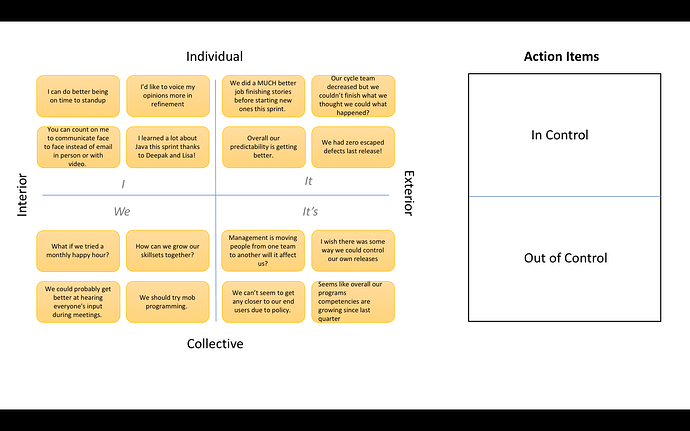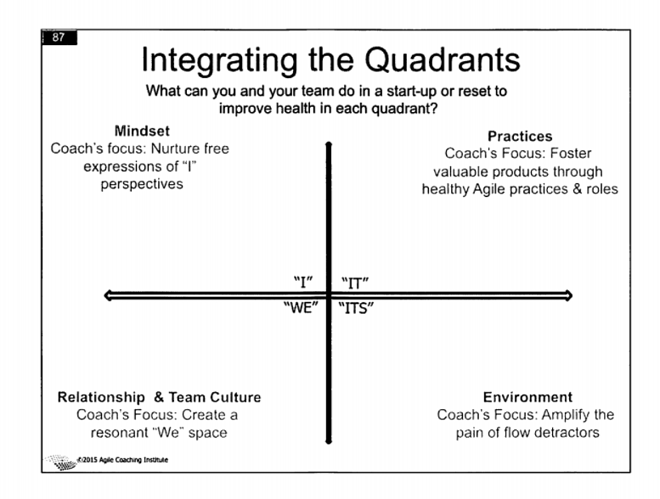Been reading a lot about integral theory lately and had an idea to create a retro based on Ken Wilbur’s four quadrants. Not getting into the levels here but in theory I think this could be a very powerful retro.
One of the core tenants of the theory is that everything is a part of something and everything is also a whole. Understanding this helps us to step back and see different perspectives and make decisions based on a holistic view instead of a narrow one.
Explanation of the four quadrants for this specific retro idea:
The left side is for individual and team based internal reflection.
The right side is for team based (at the top right) and systems based (bottom right) reflection.
The right side is observalable evidence from the outside. The left side is for internal observations of self and team including learnings, team dynamics, etc.
Here is how the retro idea I came up with goes…
- Start off by explaining the four quadrants.
- Ask the team members to try and come up with at least one item for each quadrant.
- After posting inside the appropriate quadrant, start with the top left quadrant and have the team members read off the topics they wrote relating to self. Same goes for bottom left which would be next.
- The Facilitator then reads through the top right and bottom right quadrants.
- Action items are recorded throughout and may include things such as new working agreements, learning logs, ideas for team building, process improvements, and organizational improvements or impediments to improvement.


